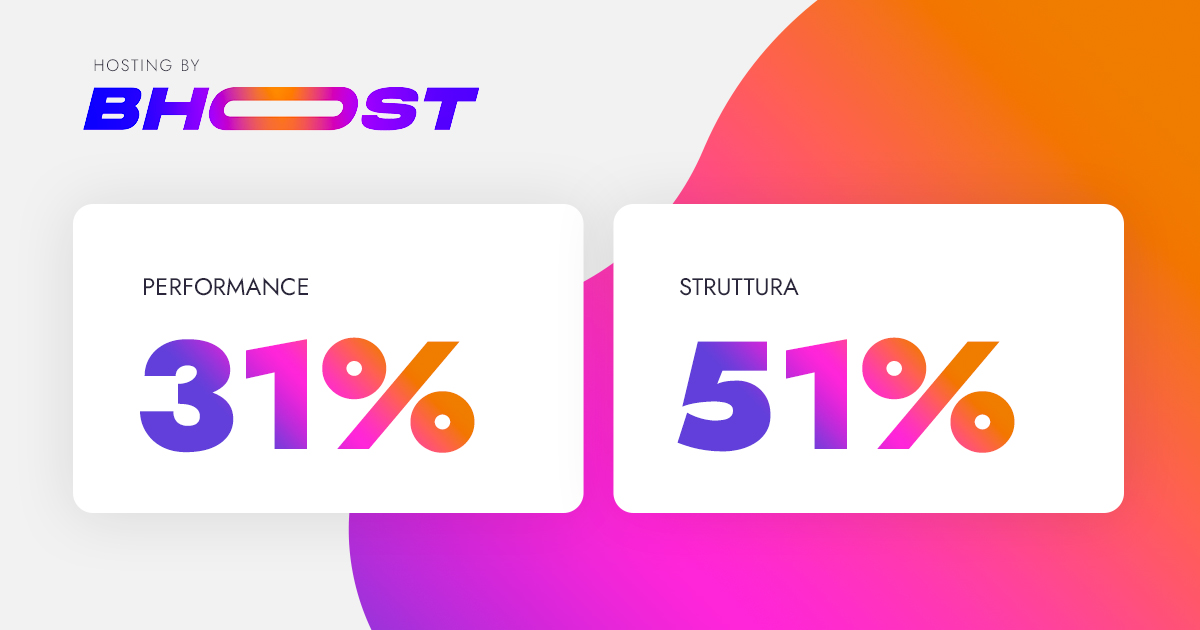When it comes to website performance, it’s common to wonder if poor scores are attributable to hosting or developer. In fact, both can impact a site’s overall performance. In this article, we will look at the different factors that can cause poor performance scores and discuss both the role of the hosting and the developer in improve site performance.
Let’s start by talking about the hosting. The hosting of a website plays a vital role in determining the overall performance. If the hosting is low quality or not optimized for the specific needs of the website, this may occur a slow server response, long loading times, and an overall poor user experience. Some key factors to consider for good hosting includeServer speed, availability, scalability and security.
However, it’s not just hosting that affects website performance. It too developer has an important role. A competent developer should follow best web development practices to optimize code, reduce resource burden, minimize server requests and improve the overall user experience. Through the use of caching, resource compression, image optimization and other techniques, a developer can greatly improve website performance.
So, who is responsible for poor performance scores? Let’s delve deeper into the discussion in this new article.
Why should I care about bad performance/structure scores?
First we ask ourselves why I should actually care about site scores and performance. For starters, because these greatly affect the user experience. In fact, a slow website leads to a negative user experience. Not only is this because those who visit it do not have an immediate response to their requests (for example completing a purchase, seeing a product page or specific content), but it also gives a sign of unreliability and insecurity.
So here we go with the introduction of metrics Core Web Vitals, Google has also shown that it pays a lot of attention to these aspects. YourIn fact, performance score essentially represents the experience of your visitors into key user-centric metrics (e.g. Web Vitals) as your page loads. Morethe lower your performance score, the worse your page will perform from the point of view of your visitors. Factors like location, network connection speed, and more (ads, cookies, etc.) can also impact how your page loads, which in turn affects your performance score.
Facility score
On the other hand, aNegative structure score means your page probably wasn’t built with the best front-end practices in place. There are numerous strategies and methods for implementing a website to ensure an optimal loading time, and with a poor structure score, chances are your website has none of them in place.
Your performance on the Facility Score does not necessarily correlate with your Performance Score. However, improving your structure score can be a good starting point for improving your overall page load times (which can potentially impact your performance score). Overall, getting better results can not only improve your visitors’ experience on your page, but will also likely lead to more conversions and potentially improved SEO rankings as well. This means that improving your scores has tangible benefits for your website/business/operations.
What are the causes of poor performance/structure scores?
Not reaching thresholds for any of the 6 performance metrics:
- First Contentful Paint (FCP)
- Largest Contentful Paint (LCP)
- Speed Index (SI)
- Time to Interactive (TTI)
- Total Blocking Time (TBT)
- Cumulative Layout Shift (CLS)
it doesn’t just mean having a site that doesn’t perform optimally, but as we also said in our article dedicated to Core Web Vitals, it also means penalizing him. This is why it becomes essential to be able to have a site that responds quickly and performs.
But what does not achieving a satisfactory score on these metrics depend on?
Many of these parameters are directly related to CSS/JavaScript execution, code or image optimization, but also hosting and other features.
But let’s see in detail what can actually negatively affect our site.
Reasons for Incorrect Structure Scores:
There are several reasons why a site might be slow and not meet the Core Web Vitals score:
- Image optimization: Non-optimized images can slow down page loading. It is important to resize, compress, and use appropriate image formats to improve performance.
- Code not optimized: Inefficient, heavy, or buggy code can negatively impact site performance. It is important to write clean, efficient and well-structured code to improve loading speed.
- Cache and storage: Proper cache configuration and use of caching techniques can reduce page loading time. Using browser caching and implementing a server-side cache can improve overall site performance.
- Low quality hosting: A low-quality hosting service can negatively affect the performance of your site. If the hosting does not provide enough resources or has a slow connection, the site may be slow.
- Heavy plugins and scripts: Excessive use of plugins or heavy scripts can slow down page loading. It is important to carefully evaluate your use of plugins and scripts and ensure they are optimized for performance.
- Slow network connection: Page loading speed also depends on the user’s network connection. A well-optimized site may still be slow if the user has a slow connection.
- Server performance: Server performance may affect overall site performance. An overloaded or resource-constrained server may cause slow response times.
- Page size and complexity: A page with many elements, scripts, or heavy media may take longer to load. It is important to reduce page complexity and optimize content to improve performance.
These are just some of the factors that can affect the performance of a website. It is important to identify and resolve specific causes to improve your Core Web Vitals score and provide an optimal user experience.
Hosting or developer?
The question therefore arises: “should I contact my hosting provider or developer?”
There is no simple answer as it depends on who is responsible for your poor performance/structure scores.
Contact yours hosting provider with:
- you have a long TTFB
If a long TTFB due to slow server response is the reason for your poor performance/structure scores, it is most often the case that underperforming servers/lack of server resources are the cause. However, keep in mind that poor/inefficient backend code could also be responsible for this, in which case you may need developer assistance. - See Problems CDN:
If your poor results are caused by CDN problems, contact your CDN provider (in some cases, it turns out to be the same as your hosting provider).
Contact yoursdeveloper with:
- You have unoptimized images/videos:
If your poor results are caused by too many unoptimized images (or videos), you will need to contact your developer as this is purely a front-end design issue. - Have CSS/JavaScript not optimized:
When CSS and/or JavaScript are responsible for your poor scores, you will need to ask the developer for assistance as this is also a front-end issue. While reducing your website’s CSS/JavaScript code naturally helps improve performance, you should take care to ensure that essential code is not eliminated. Reducing unused CSS/JavaScript should therefore be a priority to ensure the browser isn’t processing potentially expensive code that isn’t even needed on the page. - Caching must be configured:
Finally, if you want to set up caching, you can do it yourself (for WordPress users) or contact your developer to have it set up for you. Please note that your poor results could also be due to a combination of the reasons above. In this case, we recommend addressing the most critical issues first and then addressing the rest based on feasibility. - Third party scripts are problematic:
If your poor scores are caused by third-party content, you should contact your developer only after you have reviewed your site’s third-party content, determined which requests are negatively affecting your performance, and removed those that do not add value to your business . A developer can then potentially assist with additional optimization opportunities for required third-party requests.
Essentially then, you should contact your hosting provider for TTFB and CDN issues (only if your hosting provider is the same as your CDN provider). However, you can contact your developer for all other front-end issues displayed in the Structure tab.
We recommend working on the critical issues first (long TTFB, Top Issues in the Summary tab) and taking care of the rest later.
In conclusion
Poor performance/structure scores can be caused by a myriad of performance issues on your page, both back-end and front-end. This means that your visitors are probably not having a good experience on your page and you therefore need to intervene.
If you need performance monitoring on the hosting side, contact us and we will find the best solution for your needs.

Free 30-days trial Hosting corewebvitals Fast, Secure and Optimized
Switch to Bhoost with 30 days free and migration included
Free 30-days trial


